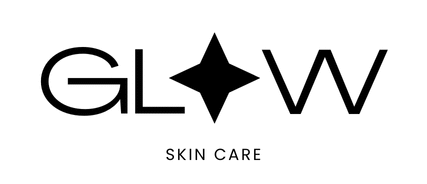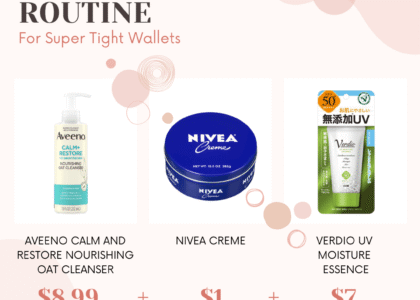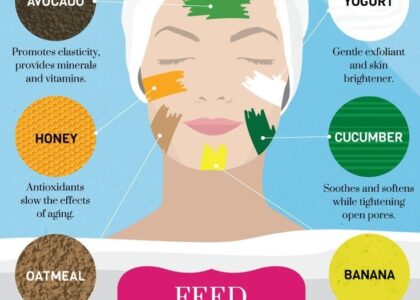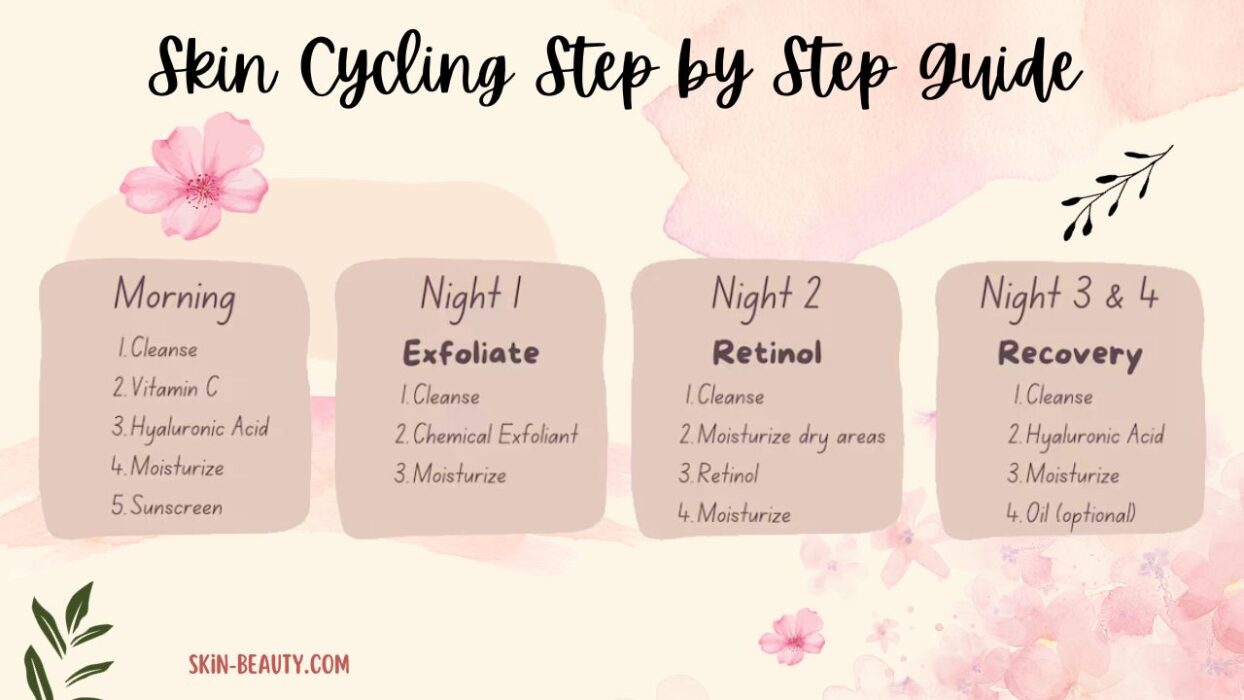Retinol is one of the most powerful and dermatologist-recommended ingredients in skincare—but it’s also one of the most misunderstood. Known for its anti-aging and acne-fighting properties, retinol can transform your skin when used correctly.
Whether you’re new to retinol or looking to improve how you use it, this guide will walk you through everything you need to know, including:
- What retinol is
- When to start using it
- How to introduce it safely
- Common mistakes to avoid
- Tips for minimizing irritation
What is Retinol?
Retinol is a derivative of vitamin A and belongs to a group of compounds called retinoids. It is one of the most studied and effective ingredients in skincare for:
- Reducing fine lines and wrinkles
- Fading hyperpigmentation and dark spots
- Smoothing uneven texture
- Boosting collagen production
- Unclogging pores and reducing acne
Once applied, retinol is converted by your skin into retinoic acid, the active form that helps increase cell turnover and stimulate renewal.
When Should You Start Using Retinol?
The best time to start using retinol depends on your skin goals, but here’s a general breakdown:
In Your Early 20s:
- Not essential unless you’re dealing with acne, congestion, or post-acne marks
- Consider low-strength formulas (like retinyl palmitate or granactive retinoid)
In Your Mid-to-Late 20s:
- Great time to start for preventative aging
- Helps to boost collagen and maintain a youthful glow
In Your 30s and Beyond:
- Ideal for targeting fine lines, wrinkles, and uneven skin tone
- Can be combined with other actives under dermatologist guidance
Note: You can start retinol earlier or later depending on your individual skin concerns and tolerance.
How to Use Retinol Safely: Step-by-Step
Retinol is powerful—so start slow and go easy. Here’s how to introduce it without irritating your skin.
1. Choose the Right Strength
Start with a low concentration:
- 0.025% to 0.3% for beginners
- Gradually increase as your skin builds tolerance
2. Apply at Night
Retinol can break down in sunlight, making it best for evening use. Apply on clean, dry skin before moisturizer.
3. Use the “Pea-Sized Rule”
Apply only a pea-sized amount for your entire face. More isn’t better!
4. Moisturize Generously
Always follow with a gentle, hydrating moisturizer to lock in moisture and reduce dryness.
5. Start Slow: 1–2 Times Per Week
Begin with 1–2 nights per week. If no irritation, gradually build up to every other night, then nightly.
6. Use Sunscreen Daily
Retinol increases sun sensitivity. Use broad-spectrum SPF 30+ every morning, even on cloudy days.
The Retinol Sandwich Method (For Sensitive Skin)
This technique helps reduce irritation:
Step 1: Apply a layer of moisturizer
Step 2: Apply retinol
Step 3: Apply another layer of moisturizer
This buffers the retinol without sacrificing effectiveness—great for dry or reactive skin.
Common Mistakes to Avoid
Using Too Much
Retinol is potent—more can cause peeling, redness, and breakouts.
Mixing with Harsh Ingredients
Avoid layering retinol with:
- AHAs/BHAs (glycolic, lactic, salicylic acids)
- Vitamin C (in the same routine—use it in the morning)
- Benzoyl peroxide (can deactivate retinol)
Applying on Damp Skin
Retinol penetrates deeper and can irritate more when applied on wet skin.
Not Using SPF
Skipping sunscreen defeats the purpose of using retinol—it makes your skin more vulnerable to UV damage.
How Long Until You See Results?
Retinol takes time to work—patience is key.
| Timeframe | What to Expect |
|---|---|
| 2–4 weeks | Possible dryness, mild flaking, slight purging |
| 6–8 weeks | Smoother texture, reduced breakouts |
| 12+ weeks | Noticeable reduction in fine lines, hyperpigmentation, and improved skin tone |
Best Skincare to Pair with Retinol
To support your skin while using retinol, pair it with calming, hydrating ingredients:
Ingredients to Use:
- Hyaluronic Acid – Boosts hydration
- Ceramides – Strengthen the skin barrier
- Niacinamide – Calms redness, enhances results
- Squalane – Lightweight moisture
- Peptides – Improve skin resilience
Retinol Starter Products
Drugstore Options:
- The Ordinary Retinol 0.2% in Squalane
- CeraVe Resurfacing Retinol Serum
- La Roche-Posay Retinol B3 Serum
Mid-Range to High-End:
- Paula’s Choice 0.3% Retinol + 2% Bakuchiol Treatment
- Skinceuticals Retinol 0.3
- Sunday Riley A+ High-Dose Retinoid Serum
Who Should Avoid Retinol?
- Pregnant or breastfeeding women (retinoids are not recommended)
- Severely sensitive or eczema-prone skin (consult a dermatologist first)
- If you’re already using prescription retinoids (like tretinoin), adjust under professional advice
Summary: Retinol at a Glance
| Feature | Details |
|---|---|
| What It Is | Vitamin A derivative that boosts cell turnover |
| Main Benefits | Fights wrinkles, acne, pigmentation, texture |
| Start When? | Mid-20s or when acne/aging signs begin |
| How Often? | Begin 1–2x a week, increase gradually |
| Use With | Moisturizer, hyaluronic acid, niacinamide |
| Avoid Mixing With | Strong acids, benzoyl peroxide, vitamin C (same routine) |
| Results Timeframe | 6–12+ weeks for visible changes |
Final Thoughts
Retinol can be a game-changer for your skin—but only if you use it wisely. Start slow, hydrate often, and protect with SPF. Over time, you’ll enjoy smoother, brighter, and more youthful skin.





